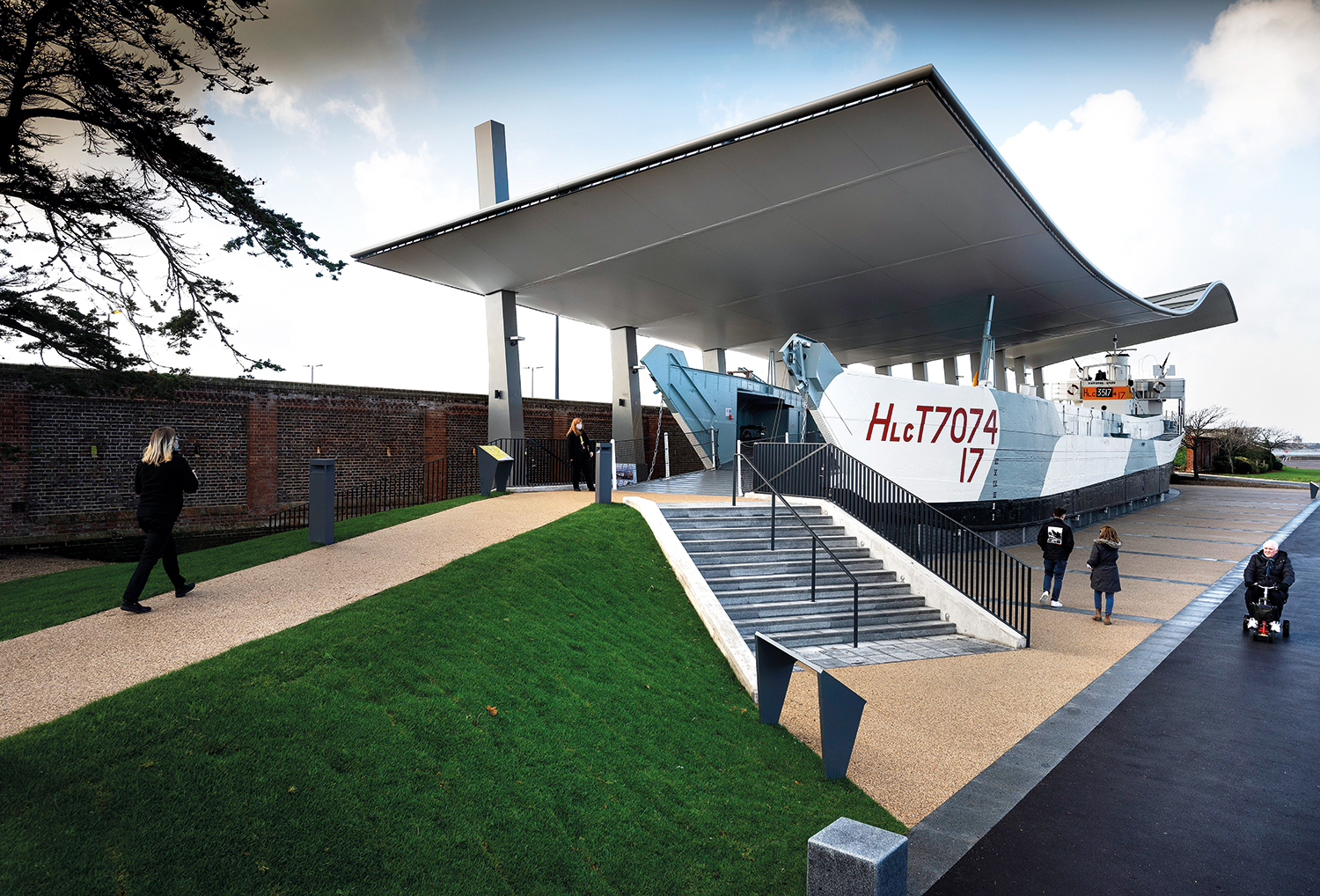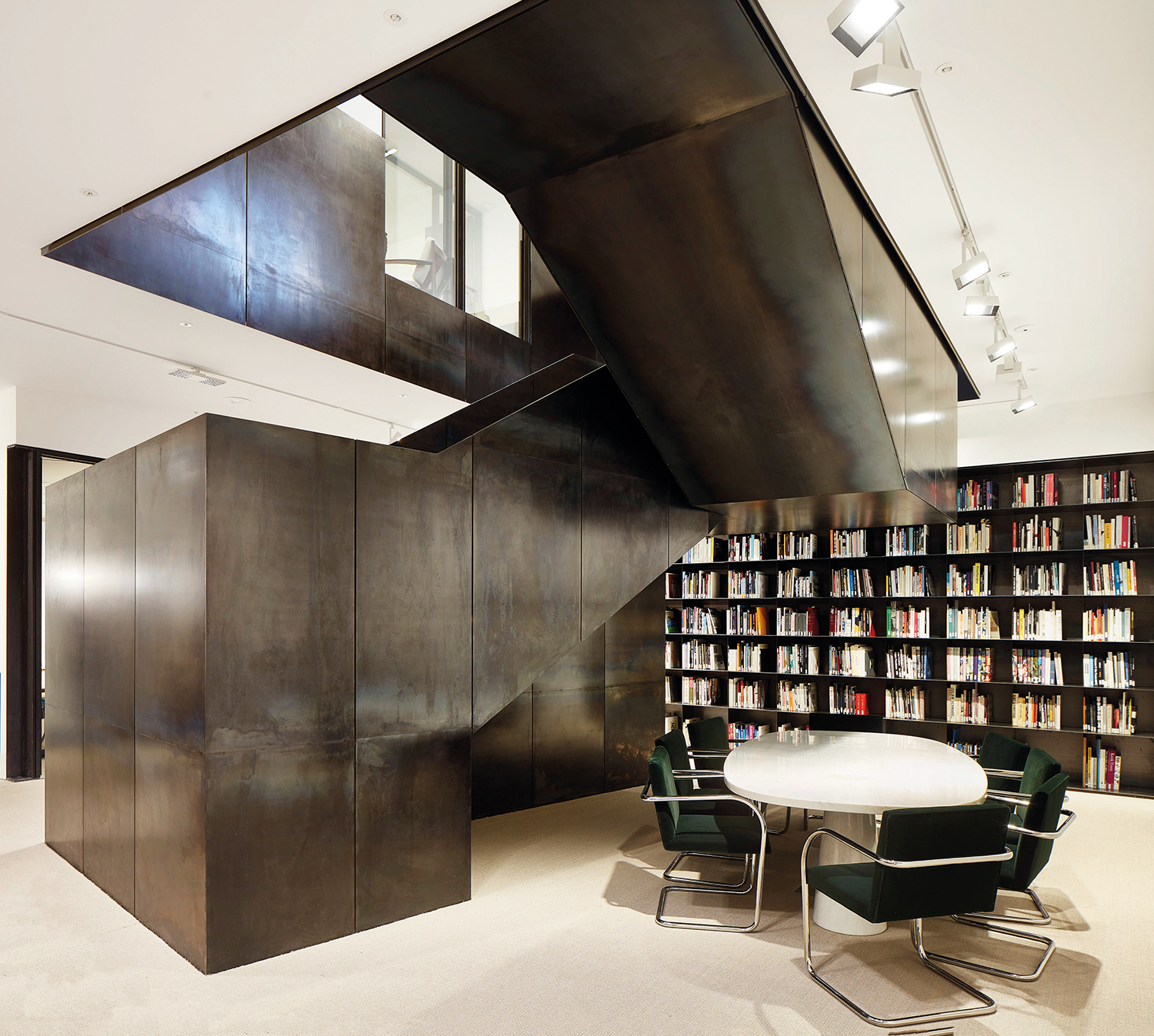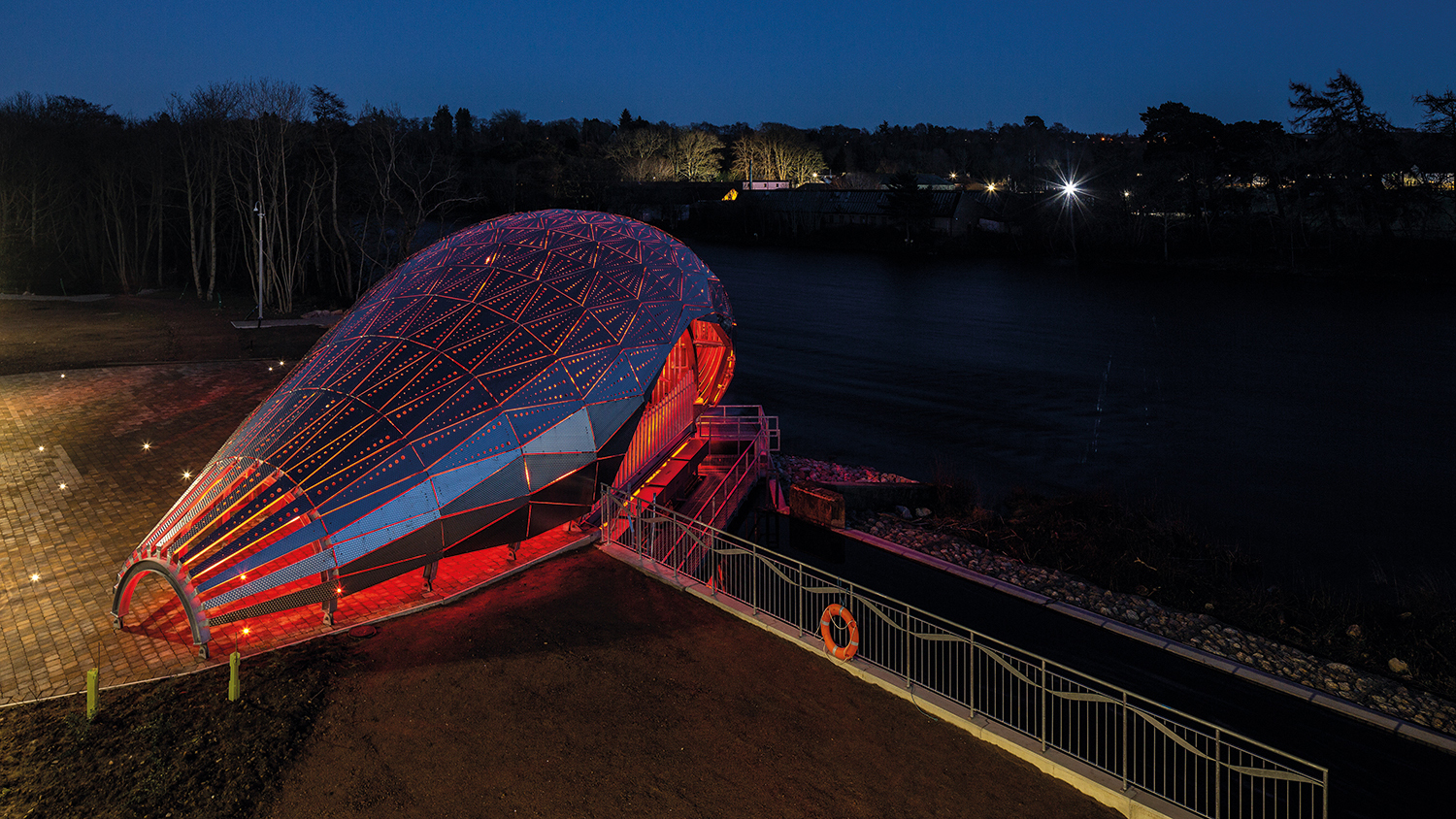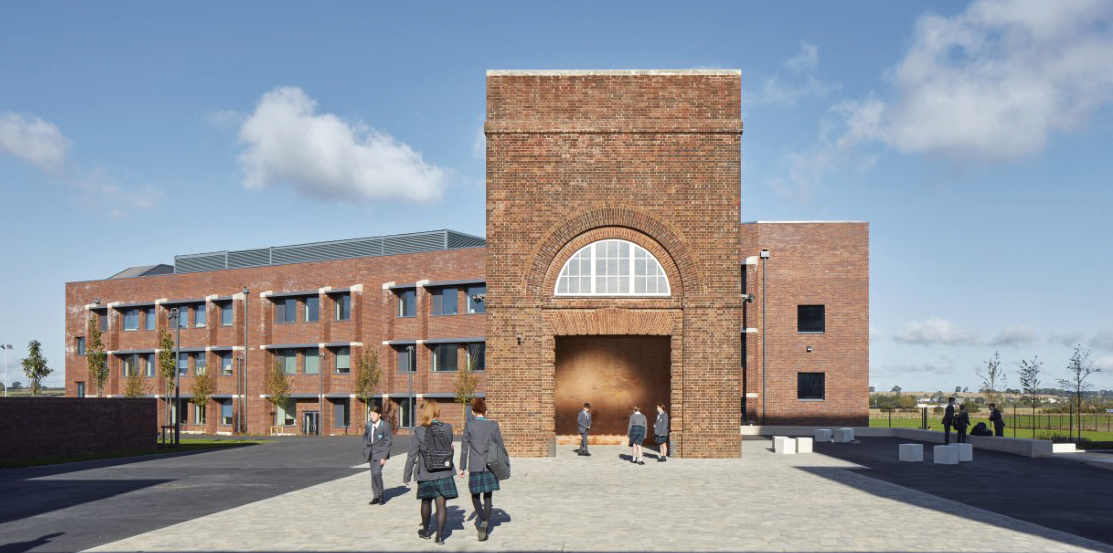
Portsmouth canopy shelters D-Day vessel
Merit: LCT 7074 Canopy, The D-Day Story, Portsmouth
Architect: Pritchard Architecture
Structural engineer: Mann Williams
Steelwork contractor: Hillcrest Structural
Main contractor: Ascia Construction
Clients: The National Museum of the Royal Navy, Portsmouth City Council
This cantilevered steel canopy is part of the D-Day Story museum on Southsea (Portsmouth) seafront. It showcases the conservation of the sole surviving landing craft tank (LCT) from the D-Day landings on 6 June 1944.
The canopy required an elegance and simplicity that is empathetic to its sensitive surroundings. All while maintaining a presence that physically relates to the robustness and mass of the ship itself.
Structural steelwork provided an efficient and cost-effective design solution for the structure. Its high strength-to-weight ratio facilitated the slender yet robust form.
The canopy is supported on one side by 12 bespoke tapered fabricated mast columns, each 12m-tall and weighing 7.5 tonnes, formed from 25mm-thick plates. The columns align with the piers of a historic wall, keeping one side of the ship clear of visual distraction and providing uninterrupted views of the vessel from the roadside.

Steel stair on show at Pace Gallery
Merit: Pace Gallery, Hanover Square, London
Architect: Jamie Fobert Architects
Structural engineer: Price & Myers
Main contractor: QOB Interiors
Client: Pace Gallery
A central London gallery has been reconfigured to become the new home of the Pace Gallery, an international art exhibitor.
Construction included the creation of two galleries on the first floor and an opened-up basement level to create a third 100 sq m public area.
The three new galleries are highly flexible. This allows the Pace team to show various types and scales of art by adding or removing internal walls and covering or revealing windows.
A sculptural steel staircase links upper and lower spaces, allowing sunlight to pour into the basement offices. The stair is fabricated from waxed raw mild steel, showing the colours of the heat marks and manufacturing processes. Its development involved close collaboration with the architect, engineer and steelwork contractor.

Hydro Ness hub stays a leap ahead
Merit: Hydro Ness, Inverness
Architect: Leslie Hutt Architect
Structural engineer: Hasson Engineering Solutions
Steelwork contractor: M Hasson & Sons
Main contractors: Bradley & Company, Hydro NI
Client: Highland Council
Signposting the benefits of renewable energy sourced from the River Ness, the Highland Council’s Hydro Ness scheme also informs young people about science, technology, engineering and mathematics (STEM) skills.
As well as generating renewable electricity and reducing carbon emissions, it provides an interactive experience and a learning hub for climate change, local ecology, engineering and renewables.
Housed within a curved steel-framed canopy, the building’s shape is inspired by a salmon making its way upstream.
The frame comprises steel sections curved to differing radii. Most of the structural steelwork was galvanised to ensure longevity.
The cladding panels – framed with SHS welded into co-planar triangles – are stainless steel with a swirl finish to enhance the intention of ‘looking like scales of a fish’.

Former radio site broadcasts quality
Merit: Houlton School, Rugby
Architect: Van Heyningen and Haward Architects
Structural engineer: Price & Myers
Steelwork contractor (new blocks): Mifflin Construction
Main contractor: Morgan Sindall Construction
Client: Urban&Civic
Steel construction has allowed historically significant radio station buildings in Rugby to be retained and converted into the new Houlton School.
The site previously hosted the first transatlantic telephone call to New York, transmitted telegraph messages to the Commonwealth and communicated with nuclear submarines during the Cold War.
A new steelwork frame was threaded through the first floor of the existing Transmission Block. This provides an additional four floors of accommodation, while leaving the existing first floor steel beams exposed and intact.
To improve circulation, two steelwork scissor stairs have been constructed at each end of the Transmission Block and ring beams added to restrain the existing walls around the new stair voids. Two further steel staircases are inserted into the adjacent Accommodation Block. External openings have been adjusted in the Power Hall to suit its new use as a dining and main hall.
Produced by the BCSA and Steel for Life in association with Construction Management











